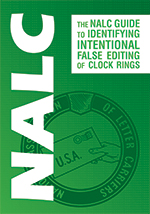Workplace issues
City Delivery

Christopher Jackson
Director of City Delivery
Christopher Jackson was reelected director of city delivery by acclamation in 2022 at the 72nd Biennial Convention in Chicago. Full bio
Fifth COLA is $790
The fifth regular cost-of-living adjustment (COLA) for career letter carriers under the 2023-2026 National Agreement was $790 annually following the release of the July consumer price index (CPI).
NALC and the Postal Service release jointly-developed document regarding the New Employee Experience Retention and Mentoring Program (NEERMP).
NALC and the Postal Service have released a jointly-developed document providing the mutual understanding of issues related to the NEERMP.
USPS announces implementation date for advanced annual leave provisions for CCAs and PTFs in accordance with Arbitrator Nolan’s March 21, 2025, interest arbitration award
Effective July 12, 2025 (PP 16-2025), city carrier assistants (CCAs) and part-time flexible carriers (PTFs) meeting the criteria will receive advanced annual leave.
USPS announces implementation dates for CCA wage increases and pay table changes in accordance with Arbitrator Nolan’s March 21, 2025, interest arbitration award
Information regarding CCA pay increases, pay table modifications and retroactive (back pay) provisions.
Now available: Special National Agreement Issue of the NALC Activist
The NALC Activist is a local leadership publication intended for shop stewards, branch officers and all local NALC leaders.
NALC and USPS resolve possible interpretive issue regarding the use of blue hampers
On April 17, 2025, NALC and USPS reached a resolution regarding a class action grievance concerning the use of “blue hampers”, also known as large capacity hampers, at a Sorting and Delivery Center (S&DC).
Virtual training on preparing an LM-2 announced
NALC Secretary-Treasurer Nicole Rhine has announced that training on preparing an LM-2 will be held virtually on March 10.
NALC Bulletin
Contract ratification ballots mailed
Virtual Rap Session now available
Important information on the 2023-2026 Tentative Agreement.
Update from Ballot Committee on contract ratification election
The 15-member Ballot Committee, chaired by Paul Roznowski of Branch 3126, Royal Oak, MI, has released the following statement.
Statement from Ballot Committee on Contract Ratification Election
The Ballot Committee has released the following statement regarding the contract ratification election.
December Postal Record available
Read the latest issue online.
NALC Bulletin
House passes Social Security Fairness Act; Branch Officers Training set for Los Angeles, Minneapolis

 The NALC Guide to Identifying Intentional False Editing of Clock Rings
The NALC Guide to Identifying Intentional False Editing of Clock Rings